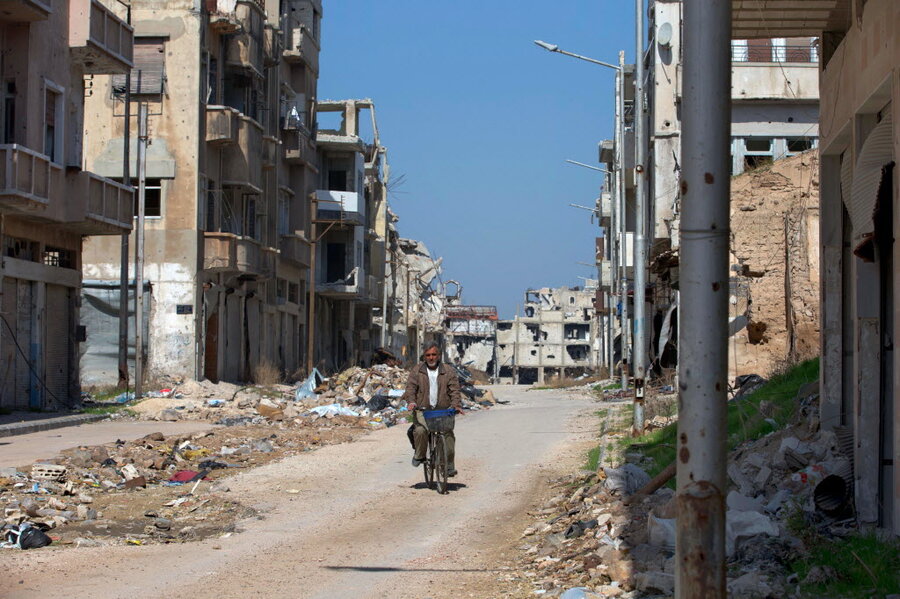Structures of hope for a new Syria
Loading...
The effort to end Syria’s civil war may be at its most hopeful point in five years. A two-month truce is largely holding. Russia has pulled back its fighter jets. The Islamic State appears weaker. And a third round of talks will be held soon in Geneva to find a compromise on forming a democratic, secular state.
The many countries that care about Syria are now asking how this shattered country can be reconstructed and its 22 million people healed of their divisions. The World Bank estimates it would cost $170 million to rebuild Syria. Even talk of a “Marshall Plan” for Syria can help propel the peace process. The West, in particular, cannot afford to repeat the mistakes made in Afghanistan, Iraq, and Libya of not providing enough support after a conflict for nation-building and a restoration of civic unity.
One person thinking hard about this problem is Marwa Al-Sabouni. She holds a Ph.D. in Islamic architecture and has continued to live in Homs, one of Syria’s most devastated cities, with her husband and children even as bombs fell and snipers killed at random. Her new book, “The Battle for Home: The Memoir of a Syrian Architect,” offers good advice as the country tries to restore its national identity.
Her lens is architecture, or the “built environment,” and how it can help reconnect Muslims, Christians, and others who once lived peacefully with each other in Syria. As Winston Churchill once said, “We shape our buildings; thereafter they shape us.”
Homs itself, which is Syria’s third largest city, was once well-known for its religious harmony and a famous mosque and a historic church. If Syrians can work together to rebuild their homes and public spaces to create a caring environment, she says, it will heal wounds and integrate people into a larger community.
She claims the Assad regime had forcibly built residential structures to divide Syrians by sects. Housing complexes were constructed without consideration for beauty or reflective of local values. This contributed to the social breakdown and the eruption of protests for democracy in 2011.
In a United Nations competition, she has offered a design to reconstruct the Homs community of Baba Amr, one that recognizes its peculiar aspects such as its climate, craftspeople, and agricultural richness. Urban planning must rely on understanding a community’s moral values, she says. For Baba Amr, those values are best expressed in patio gardens, retail shops, and shared spaces. She likens her design to a tree, with connecting nodes.
The fact that a woman in a war zone can think so clearly and compassionately about post-crisis solutions for her country should serve as an inspiration to others. Her greatest contribution is to insist that Syrians be given a voice in shaping their buildings. The war began with a cry for democracy. It can be ended by granting that wish, both in type of government and style of architecture. She compares architecture to a mirror. In Syria’s case, she says, it can lead people out of the black hole of war.







